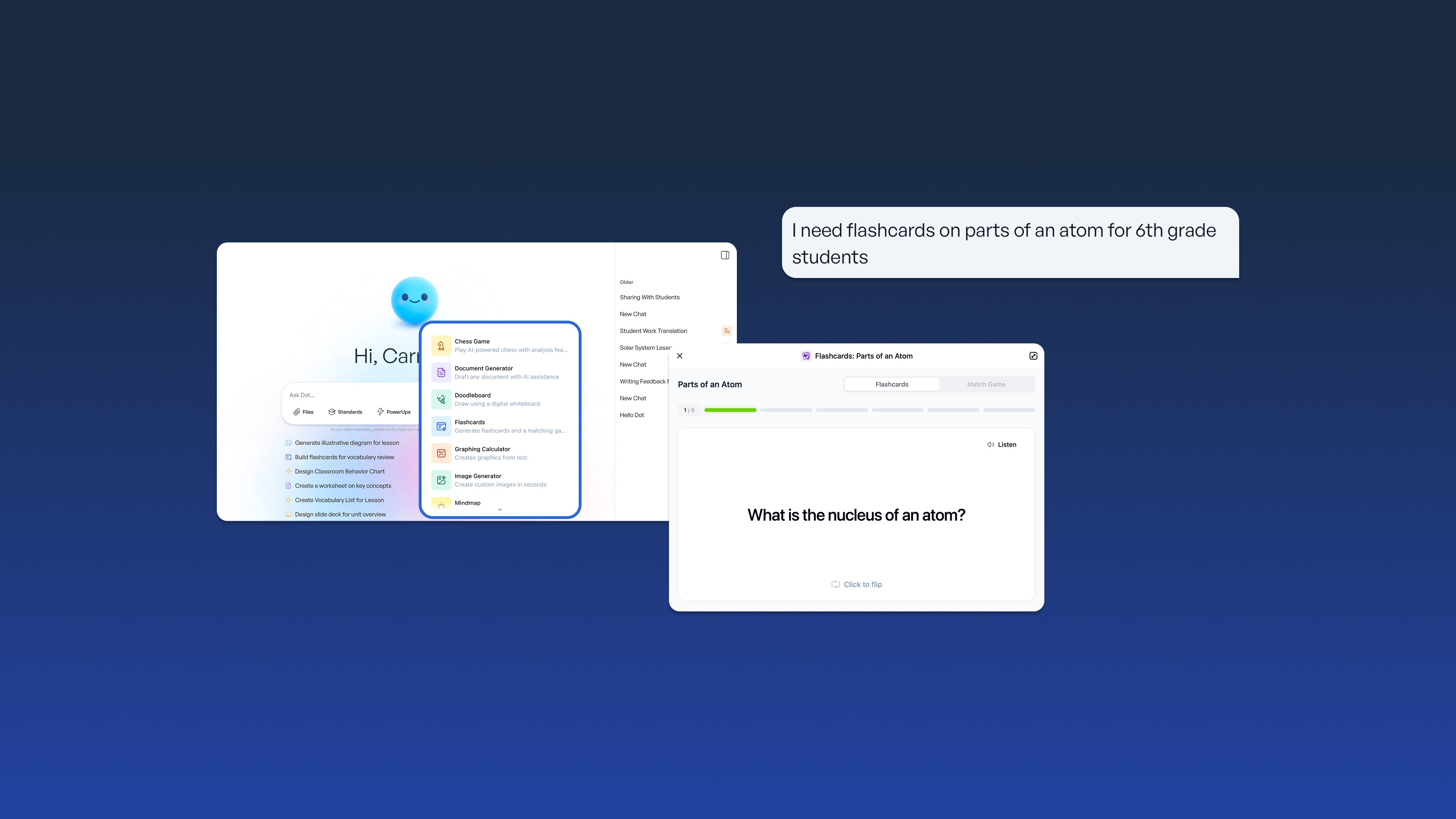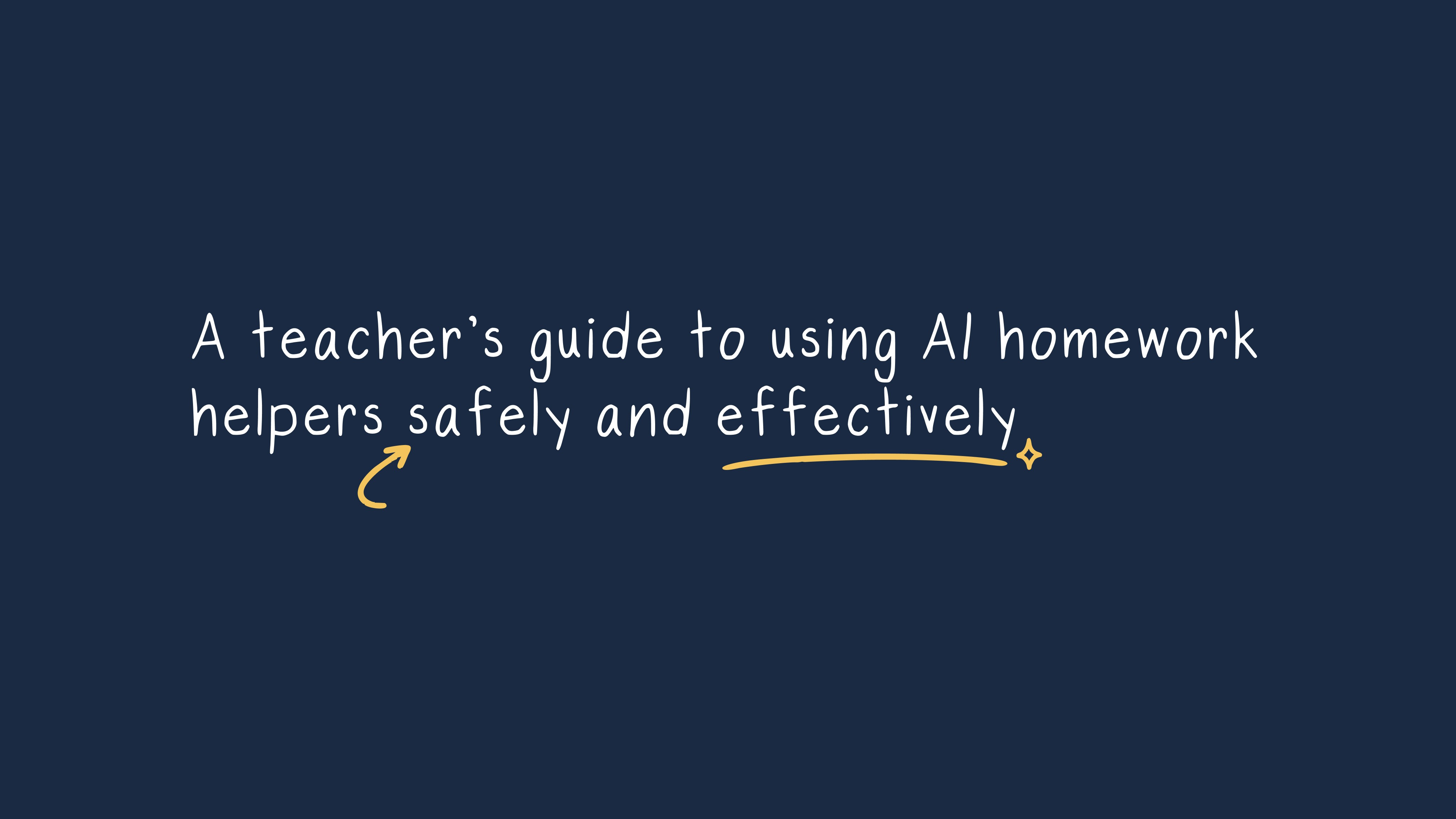Nikki Muncey
Apr 9, 2025
Get started
SchoolAI is free for teachers
Classrooms have evolved dramatically, shifting from teacher-centered spaces to collaborative environments where students take center stage. This evolution reflects what educators now understand: recognizing and appreciating different student types in class is essential.
Students bring their own unique learning styles, backgrounds, and needs to school every day. As classrooms become more diverse, recognizing different student types isn't just helpful—it's essential for effective teaching. Today, we’ll take a closer look at the student types you’re most likely to encounter, and discuss strategies for how to engage them optimally.
Common student types
The modern classroom is a mosaic of diverse learners, each bringing unique strengths, challenges, and learning preferences. Understanding these different student types empowers educators to create inclusive environments where every learner can thrive.
The highly engaged student
The highly engaged student is much more than just an "eager beaver." These self-directed learners bring genuine motivation and independence to class. They set their own goals, monitor their progress, and comfortably use technology to learn beyond what's assigned.
To support these motivated learners while making space for others:
Offer extension activities for deeper exploration
Create opportunities for them to teach peers
Help them develop time management skills
Set up discussion protocols, ensuring everyone participates
The quietly engaged student
Participation doesn't always look the same. Quietly engaged students often learn deeply despite minimal verbal contributions. They're actively processing information and making connections—they just show it differently.
Culture often shapes participation styles. Students from collectivist backgrounds may value listening and reflection over speaking up. Similarly, introverted students might prefer processing information internally before sharing thoughts.
To assess these students fairly, try different participation structures that honor diverse communication styles. Written reflections, digital response tools, small group discussions, and visual projects give quieter students meaningful ways to demonstrate learning.
The selectively engaged student
Students who seem checked out during most activities but suddenly come alive for specific topics are selectively engaged. Their engagement pattern is interest-driven rather than reflecting overall academic motivation.
Try making real-world connections, using tech tools that appeal to them, such as AI-powered bellringers, and implementing project-based learning to bridge required curriculum with their existing interests.
The disengaged student
Disengagement isn't laziness or defiance. Students check out for many reasons: learning gaps, personal struggles, or curriculum that seems irrelevant to their lives. These students need individualized support and fresh approaches.
The social leader
Social leaders have strong interpersonal skills and significantly shape classroom dynamics. When properly channeled, these students create magic in your classroom. They excel at running group projects, motivating reluctant classmates, and fostering positive interactions, thus helping to build inclusive environments.
Many educators find it helpful to give these students meaningful leadership roles that use their strengths while supporting academic goals.
The socially hesitant student
Social hesitancy stems from various sources: introversion, social anxiety, or social skills gaps. Creating safe social opportunities, such as custom icebreaker activities, helps these students build confidence gradually. Start with structured partner work before moving to small groups.
Students with learning differences
Students with learning differences often struggle with self-esteem related to academic performance. They thrive in environments that celebrate diverse strengths and learning styles, providing multiple avenues for supporting diverse learners.
Universal Design for Learning (UDL) makes learning materials and methods accessible to everyone, not just those with identified learning differences. This approach benefits your entire class by providing multiple ways to engage, learn, and express knowledge.
The creative learner
Creative learners bring special qualities that deserve recognition and support. They think outside conventional boundaries and often excel in arts, music, or creative writing. While they offer valuable perspectives, creative learners often struggle with rigid or highly structured tasks.
Many educators have found that balancing freedom with structure works best for these students. Using creative learning methods, such as open-ended projects, lets them explore topics through their preferred creative medium while helping them develop organizational skills.
The English Language Learner
English Language Learners (ELLs) face unique challenges as they develop language skills while mastering academic content. These students benefit from visual aids, graphic organizers, and cooperative learning that provides practice in reading, writing, speaking, and listening.
The perfectionist student
Perfectionist students set incredibly high standards for themselves. They're detail-oriented and thorough, often producing outstanding work, but may struggle with time management and fear of failure.
Several strategies help these students thrive:
Provide clear rubrics and expectations
Create opportunities for drafts and revisions, possibly using an editing process space, to help them improve their work iteratively
Discuss the concept of "good enough" versus "perfect"
Show them how to handle mistakes constructively
Break large projects into smaller pieces with individual deadlines
Assessment strategies for identifying student types
Understanding your diverse learners starts with effective assessment combining formal and informal approaches:
Formal assessment tools
Learning style surveys like the VARK questionnaire
Learning Style Inventory (LSI) quizzes like this one
Custom surveys addressing specific aspects of learning
Observation techniques
Your direct observations reveal insights formal assessments might miss. Notice:
How students engage with different presentation methods
Participation levels across various activities
Preferred ways of completing assignments
Student self-reflection
Make students active participants in the assessment process through:
Class discussions about learning preferences
Written reflections on how they learn best
One-on-one conversations about educational needs
Personal learning goals based on self-identified strengths and challenges
Creating a responsive classroom environment for all student types
Your classroom's physical and social environment significantly impacts how diverse students engage with learning. Creating a more responsive environment can be as simple as rearranging the space to suit different learning needs or using more inclusive language when teaching.
Physical space considerations
Create flexible spaces that accommodate various learning styles:
Quiet areas for students who need minimal distractions
Collaborative spaces with movable furniture for group work
Standing options for kinesthetic learners
Establishing inclusive norms
Collaboratively create agreements that respect different learning needs
Develop systems, such as personalized learning pathways, that celebrate multiple types of achievement
Use inclusive language that acknowledges diverse perspectives
Embracing personalized learning for every student type
Understanding student types gives us valuable patterns to inform teaching, but true success comes from seeing each student as a unique individual. The most effective educators maintain this balance—recognizing common learning profiles while providing personalized learning experiences that respond to each student's particular needs and strengths. There are many success stories of educators who have embraced this approach, transforming their classrooms.
Ready to transform how you support diverse learners? SchoolAI offers the all-in-one AI platform built specifically for education. Create personalized learning experiences, engage every student type, and simplify your teaching workflow. It’s built by educators for educators and free for teachers — sign up and start creating, personalizing, and engaging today.
Key takeaways
Recognizing diverse student types is essential for effective teaching in modern collaborative classrooms.
Social dynamics play a crucial role, with social leaders creating positive environments while socially hesitant students need structured opportunities to build confidence.
Students with learning differences, creative learners, English language learners, and perfectionists each require specific support strategies tailored to their needs.
Effective assessment combines formal tools, observation techniques, and student self-reflection to identify learning techniques.
Creating responsive environments requires flexible physical spaces, inclusive norms, and technology integration that delivers personalized learning experiences.
Transform your teaching with AI-powered tools for personalized learning
Always free for teachers.
Recent posts
Create lesson plans that work: Strategic planning for teachers
Cheska Robinson
—
Dec 18, 2025
A teacher’s guide to using AI homework helpers safely and effectively
Heidi Morton
—
Dec 18, 2025
AI vs. human connection: The real battle for student attention
Cheska Robinson
—
Dec 15, 2025
How AI can help teachers boost student participation in group activities
Cheska Robinson
—
Dec 15, 2025





